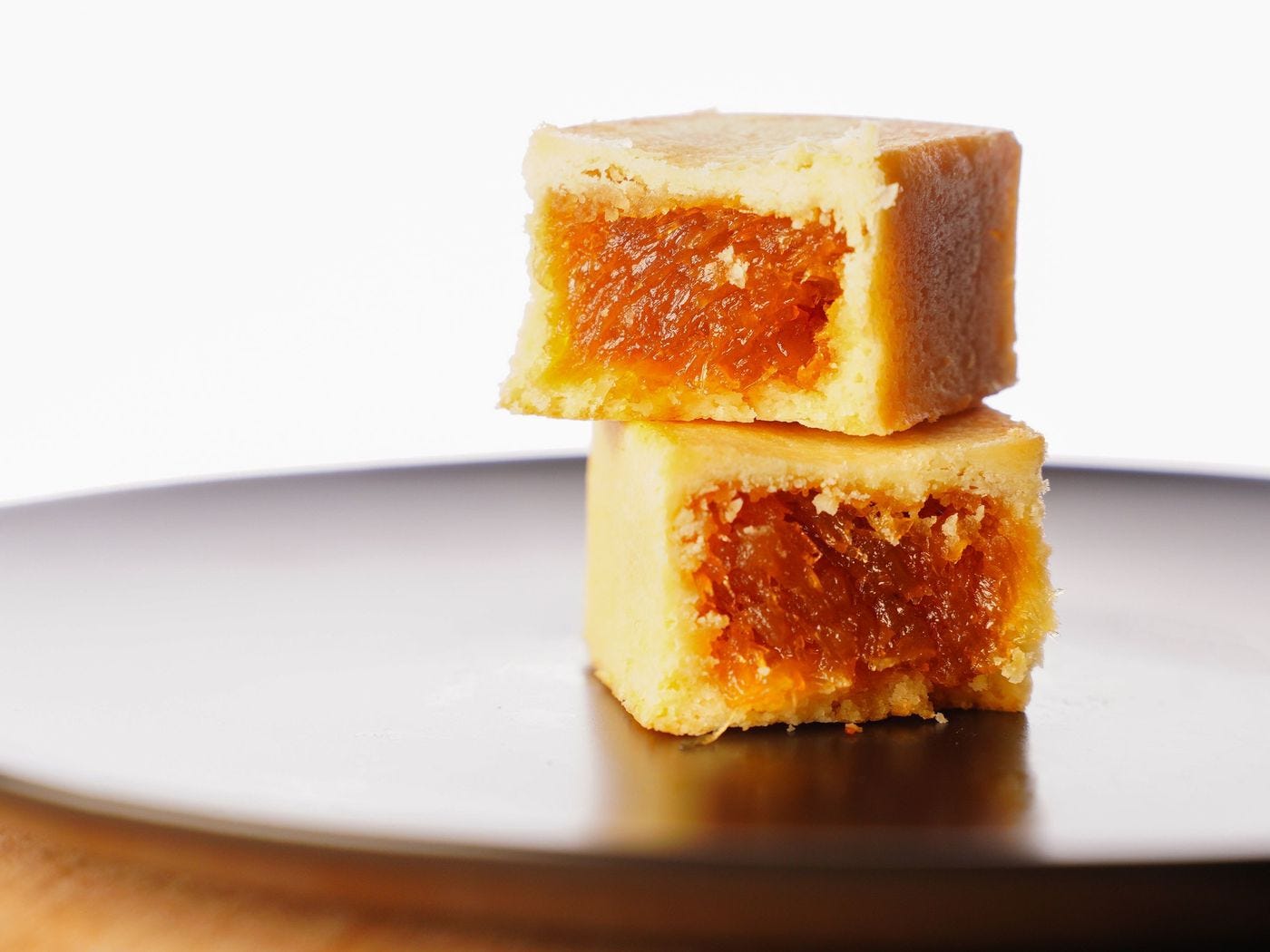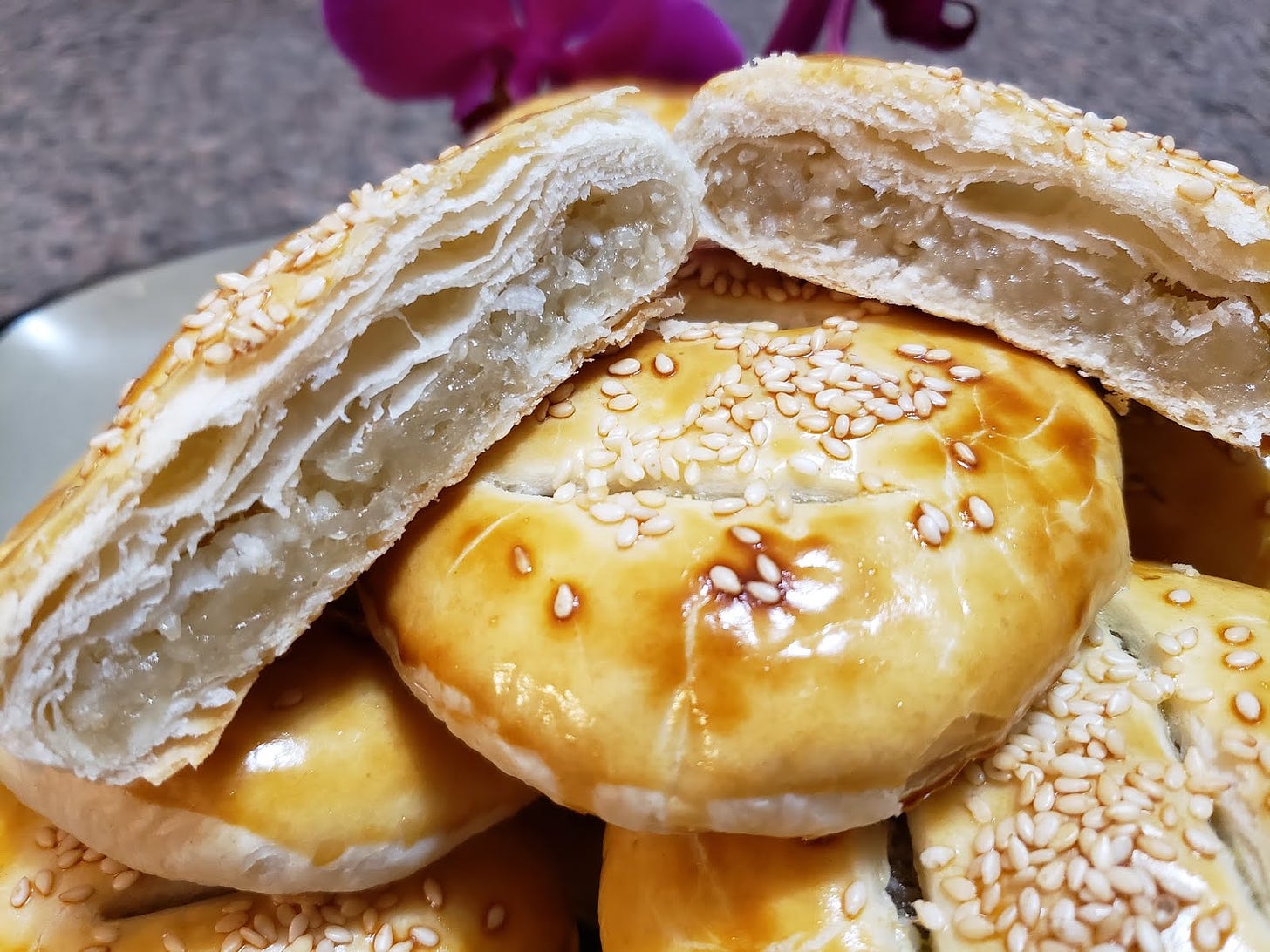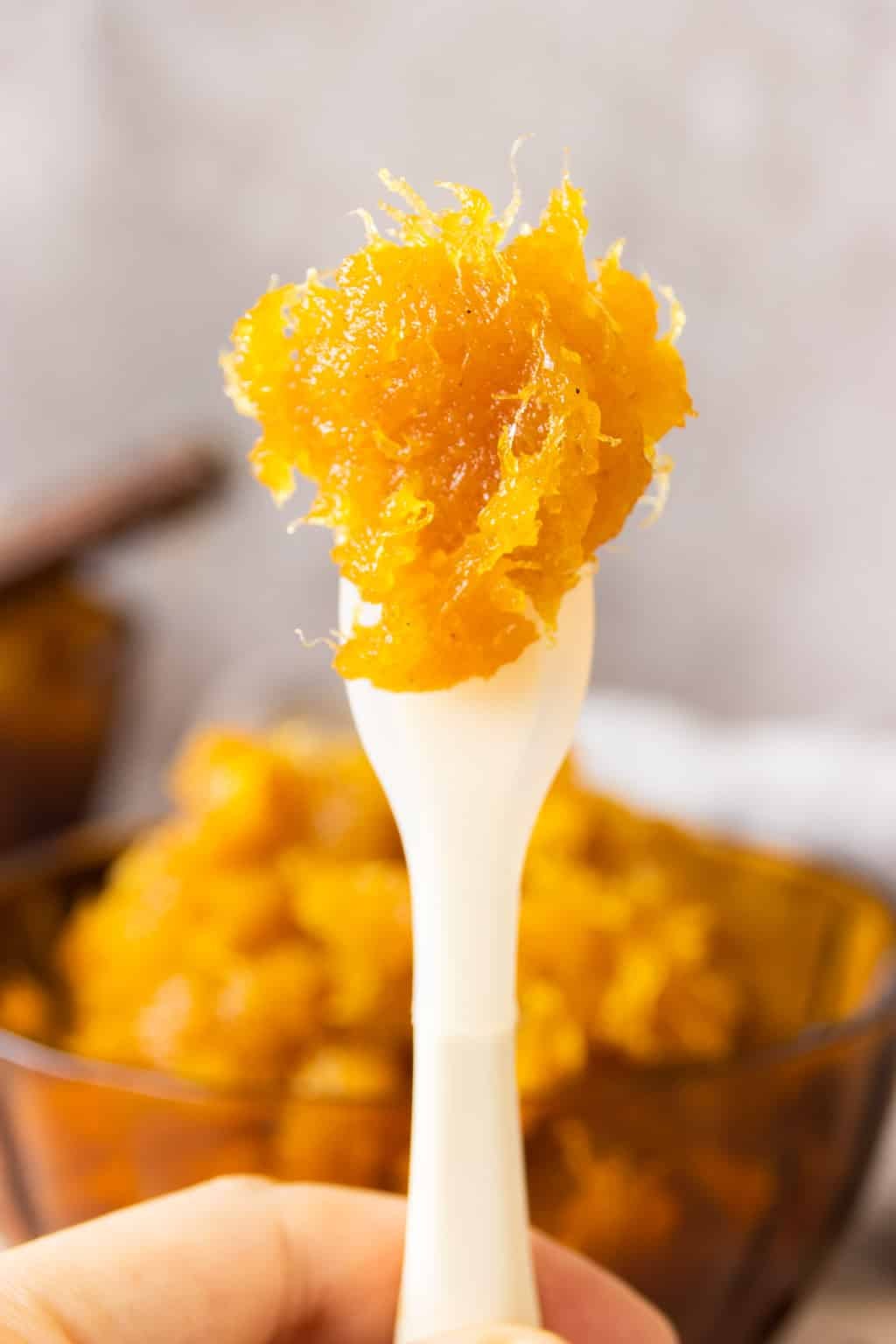A deep-dive: pineapple tarts
Part I: Taiwanese pineapple cakes vs. Southeast Asian pineapple tarts
Happy 2022 everyone! I’m kicking off this year’s newsletter with a deep-dive on pineapple tarts, a treat which is incredibly beloved and equally embraced by all communities in Singapore. This week, you’ll receive newsletters as a three-part series: in this first newsletter, we will uncover the differences between Taiwanese pineapple cakes and Southeast Asian pineapple tarts. The second and third newsletters to come will explore the intricacies of the pineapple tart-making process. There’ll also be a recipe at the end of the series for you to try making some at home this Chinese New Year.
Taiwanese pineapple cakes
The name for Taiwanese pineapple cakes is feng li su (凤梨酥). Last year when I was chatting with Yeo Min (who is currently writing a cookbook on Chinese pastries), she said that the word for pastry in Mandarin is ‘su’. Just like French pastry, there are categories under that word. “There is su bing which could either mean a shortcrust pastry or puff pastry. Then there is su pi which is specifically talking about the flaky pastry… French pastry is just butter, butter, more butter, but Chinese pastry could be peanut-oil based, lard-based, or shortening-based.”
In the early days, Taiwanese pineapple cakes were made with lard in the pastry and with a jam comprising largely of winter melon jam. In Taiwan, melons such as bittergourd or winter melons are grown in rotation with rice. Thus, there are many desserts that make full use of the abundance of winter melon.
An example is candied winter melon, which features in desserts like cheng tng. Another use for the melon is winter melon paste, made by cooking the melon down into a thick paste and preserving it with sugar. We see this in traditional sweets such as wife biscuits, piglet biscuits, and mooncakes.
The incorporation of pineapples into winter melon paste came when Southeast Asian countries started offering pineapples more cheaply than Taiwan on the global market, leading to a growing surplus of available pineapple. Finding ways to use up the supply, Taiwan’s pastry-makers made jam from both pineapple and winter melon, and the pineapple cake was born.
Interestingly, where long strands of pineapple fiber are the hallmark of a good pineapple tart in Singapore, fibrous jam in pineapple cakes is less desirable to the Taiwanese. The winter melon keeps the pineapple jam from being too fibrous, yet is mild enough in flavour to allow the fragrance of the pineapple to shine through. This preference for pineapple flavour but not texture has seen some producers using 100% winter melon in their jams but flavouring the paste with pineapple essence and yellow colouring.
In Singapore, pineapple tarts (凤梨挞) were a result of European influence. Like its name suggests, the pastry of pineapple tarts is very similar to tart dough (pate sablee), where butter is rubbed into flour and egg added as a binder. This technique produces cookies with a delightful ‘short’ and crumbly texture. Some families have recipes that feature shortening or lard instead, possibly influenced by Chinese pastry practices.
The use of pineapple jam in the bite-sized cookies was a way to make use of the bountiful pineapple production in the hot tropical climate in the Straits of Malacca. Unlike Taiwanese pineapple cakes, the jam of pineapple tarts often features spices such as cinnamon, star anise, and cloves.
It might seem strange that the word ‘tart’ is used to describe a cookie, but I’ve read that open pineapple tarts used to be large, measuring 3” in diameter, the size of a mini tartlet. Even today, when Peranakan pineapple tarts might have shrunk, their appearance is reminiscent of tarts. Traditionally, one has to press out the pastry, crimp the rim to form little wreaths around the jam, and prepare a lattice (just like a pie).
The Malays and Peranakans consider these cookies a form of “kueh”, calling them kuih tat or kuih tair respectively (‘tat’ and ‘tair’ being the Malay and Baba Malay pronunciation of the word ‘tart’). Like all kuehs that the Peranakans prepare, the quality of 'senonoh’ (delicate and refined) is important. This is manifested in the cutting of very narrow strips of pastry with a wavy blade (this is known as ‘tali’, meaning ‘rope’), to be arranged into a lattice on top of the tarts.
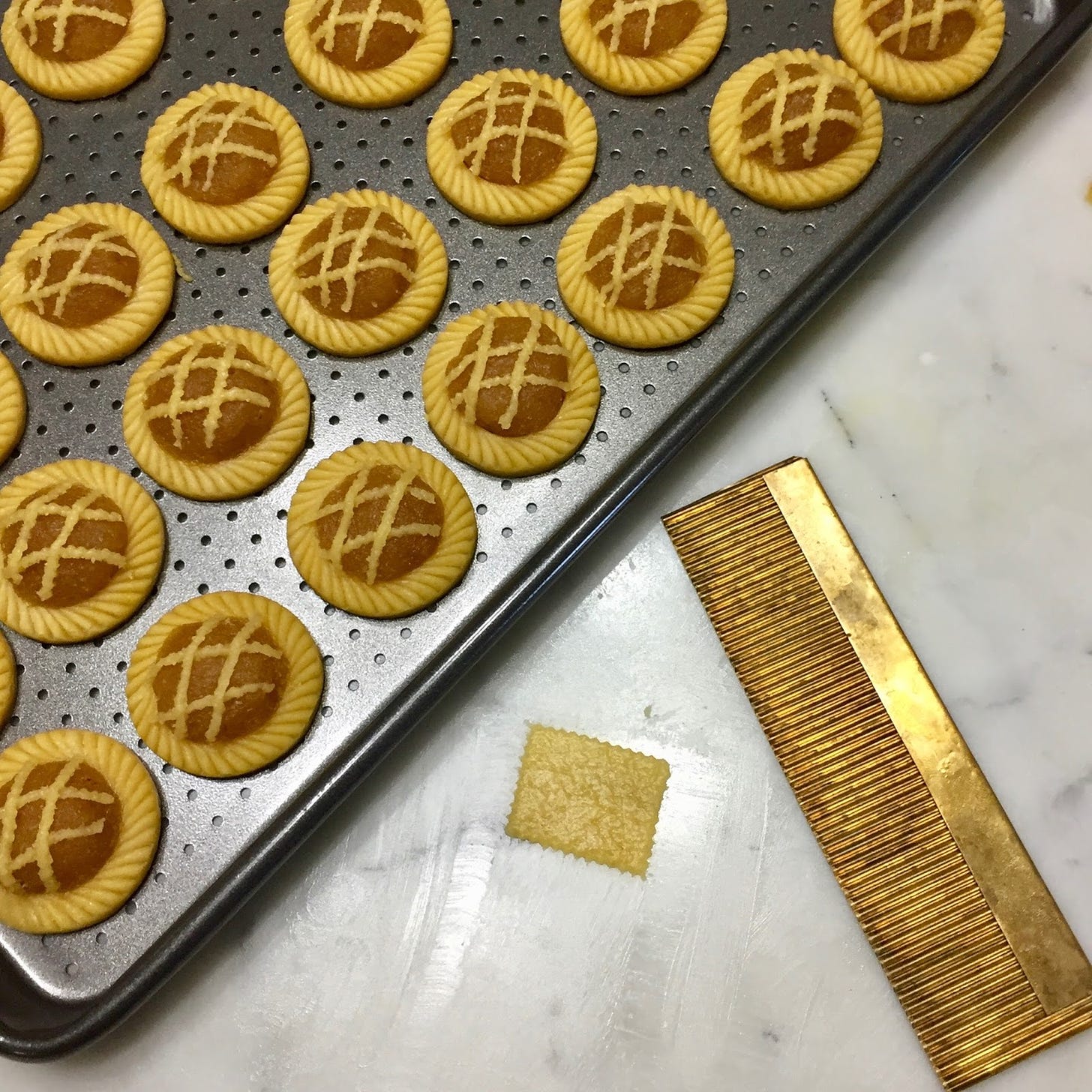
Whether it is pineapple cakes or pineapple tarts, these snacks are beloved as symbols of prosperity in Chinese culture. Pineapple in Hokkien is ‘ong lai’, which sounds like prosperity is coming. In Taiwanese wedding traditions, the families of the bride and groom give out pineapple cakes to guests, inviting loved ones to share in their hope and blessing of many offspring being born to the family. In Singapore, pineapple tarts are given out as gifts in the lead-up to and throughout the Chinese New Year period, as a gesture of friendship and goodwill.
Lloyd Matthew Tan recounts, “In a Peranakan household, it was never a practice [to distribute oranges] in the past. We tend to make things like kuih bangkit, pineapple tarts, or pickles, achar. We do red paper cut-outs, we paste it, and we give that away as gifts. We do not distribute oranges; that is something that is very alien to a Peranakan family in the past. Now, the tradition has changed and you find that everyone is giving out oranges, because I believe it is a Cantonese custom that has evolved and gone widespread amongst all the dialect groups in Singapore.”
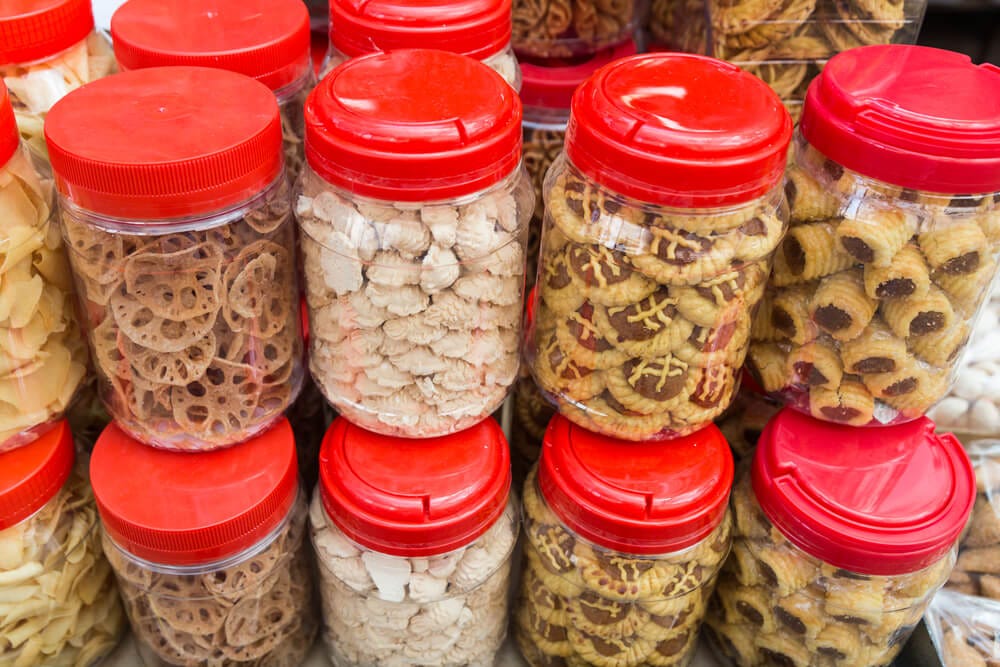
Because Singapore is home to many cultures, the mingling of Singaporeans has seen the pineapple tart making its way into the homes of all during festivals - the Chinese serve them during Chinese New Year, the Malays during Hari Raya Puasa, the Indians during Deepavali, and the Eurasians during Christmas. In the next newsletter (coming later this week), you’ll get Part II of this series, which is all about homemade pineapple jam. Till then, here’s wishing you all a wonderful 2022!
Part II: Pineapple jam
Part III: Pineapple tart pastry
Part IV: Baking tips and the recipe




